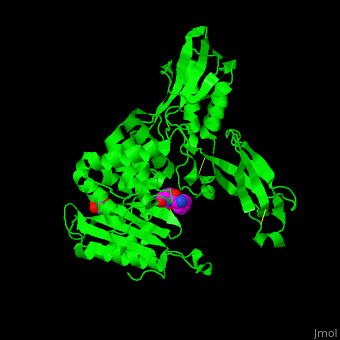Function
Penicillin-binding protein (PBPs) are a group of proteins that are characterized by their affinity for and binding of penicillin. They are a normal constituent of many bacteria; the name just reflects the way by which the protein was discovered. All β-lactam antibiotics (except for tabtoxinine-β-lactam, which inhibits glutamine synthetase) bind to PBPs, which are essential for bacterial cell wall synthesis. PBPs are members of a subgroup of enzymes called transpeptidases. Specifically, PBPs are DD-transpeptidases. See also Penicillin-binding proteins.
Penicillin-binding protein or peptidoglycan d,d-transpeptidase or D-alanyl-D-alanine carboxypeptidase (PBP) is a bacterial protein which binds antibiotics. There are several PBPs in each organism. PBPs are involved in the synthesis of bacterial cell wall[1]. The PBP are classified to high-molecular weight and low-molecular weight groups. PBP 3 is also named FtsI.
See also:
For Mycobacterium tuberculosis PBP complex with penicillin see Mycobacterium Tuberculosis Transpeptidase Domain.
Relevance
PBP inhibition by antibiotics leads to irregularities in the cell wall and eventual bacterial death[2].
See also How B-lactam drugs work.
Structural highlights
E. coli PBP structure shows a distinct . The contains the [3]. Water molecules are shown as red spheres.
3D structures of penicillin-binding protein
Penicillin-binding protein 3D structures

